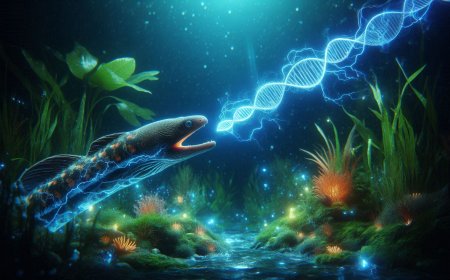Clouds of Plastic: A Skyward Warning
Explore the environmental crisis of plastic pollution with our striking image 'Clouds of Plastic: A Skyward Warning.' This visual representation illustrates the alarming impact of plastic waste on the atmosphere, urging action for a cleaner planet.

In a world where plastic pollution is often visualized as floating debris in oceans or clogging riverbanks, a new revelation takes this crisis to chilling heights—literally. Imagine walking through the misty veil of a mountain cloud, only to learn that it’s not just water droplets swirling around you. Instead, hidden within that fog are tiny particles of plastic, a reminder that our waste has reached even the loftiest corners of Earth. Recent research uncovered microplastics in the clouds surrounding Japan's iconic Mount Fuji and Mount Oyama, raising concerns about a new, airborne form of pollution.
A High-Altitude Discovery
Scientists were stunned to find that these clouds weren’t as pure as they appeared. They contained microplastics—tiny plastic particles, smaller than a grain of rice—suspended in the mist. The presence of plastic so high up indicates just how pervasive the problem has become. This revelation hints at a disturbing possibility: our water sources, soil, and even our food could face contamination from what some are calling “plastic rain.” In this new reality, plastic particles could fall from the sky along with raindrops, silently infiltrating the ecosystems below.
Leading this groundbreaking research is Hiroshi Okochi, a professor at Waseda University, who highlighted the grave environmental implications of “plastic air pollution.” According to Okochi, if these airborne microplastics remain unchecked, they could alter weather patterns, contribute to climate change, and further degrade delicate ecosystems.
How Did Microplastics Reach the Clouds?
The journey of microplastics into the atmosphere is a complex one. Microplastics come from countless sources: the breakdown of larger plastic items, tiny beads used in cosmetics, and even from car tires wearing down as they roll over roads. Once these particles are released into the environment, they are carried aloft by wind and waves, traveling great distances before settling—sometimes even in remote mountain clouds.
Researchers collected samples from different altitudes around Mount Fuji and Mount Oyama, finding a surprising mix of polymers and rubber particles. A significant portion of these plastics were "hydrophilic" or water-attracting, making them particularly effective at interacting with moisture in the atmosphere. This means they could influence cloud formation, potentially altering precipitation patterns.
Plastic Pollution’s Threat to Climate and Human Health
The impact of these findings stretches beyond just pollution concerns. The presence of microplastics in the atmosphere could be contributing to climate change in unexpected ways. When exposed to ultraviolet light at high altitudes, these particles degrade, releasing greenhouse gases like methane and ethylene. This process could accelerate the warming of our atmosphere, with consequences that reach even the most fragile ecosystems, such as polar regions already struggling with the effects of climate change.
And then there’s the impact on human health. Microplastics have been detected in our food, water, and even in the air we breathe. They’ve shown up in human organs—lungs, blood, and even the placentas of newborns. While the full extent of their health effects is still under investigation, early studies suggest that these particles could cause inflammation, disrupt bodily functions, and possibly even lead to more serious conditions.
The Bigger Picture
The discovery of microplastics in clouds serves as a wake-up call, emphasizing how deeply plastic pollution has infiltrated our planet’s systems. From ocean depths to mountain peaks, no corner of Earth seems untouched. It’s a reminder of our collective responsibility to tackle plastic pollution at its source and to rethink our reliance on disposable plastics.
While the sight of a towering mountain shrouded in mist may evoke a sense of nature’s untamed beauty, knowing that hidden within that fog are traces of our plastic waste makes it clear: our actions have consequences, even in places we once considered beyond our reach.
What's Your Reaction?







































































































